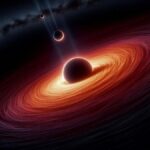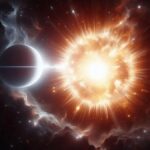The temperature on Earth is increasing and we are seeing the results through extreme weather events that are becoming more frequent and severe. As global temperatures rise rapidly, the question arises: how can we cool down such high temperatures of planet Earth and save the Earth?
Scientists have studied and suggested a bold solution for this; they have an innovative plan for injecting diamond dust into the atmosphere. As such, this idea is unconventional, but according to researchers, it could provide a solution to reflect sunlight away from the planet and cool down our Earth’s temperature, but this is a complex task. It has many challenges but also has potential benefits.
From past to present, Earth’s temperature rising rapidly due to increasing the concentration of greenhouse gases that are present in our atmosphere like methane and carbon dioxide. These gases trap heat in the atmosphere, leading to the famous term ‘global warming.’ Global warming causes the melting of glaciers and leads to rising sea levels and the ecosystem collapsing, so this is an urgent call to cool the Earth down and save it from irreversible damage.
Diamond Dust
This bold solution comes from a recent study published in Geophysical Research Letters. Meteorologists, climatologists and other scientists used advanced 3-D climate models to check different aerosols to cool down the Earth. In that model, they found that diamond dust is a top candidate. According to scientists, diamond has unique properties that will help to reflect sunlight back into space.
Diamond is chemically inert, meaning it will not react with any other substances in the atmosphere. This is good for us because these characteristics significantly lower the risk of environmental damage, such as acid rain and ozone depletion. Also, diamond dust can remain airborne for a long time without clamping together other particles; if we use anything other than diamond dust, it may clump together and cause further environmental damage.

How Much Could Diamond Dust Cool the Earth?
According to climate models, injecting 5 million tonnes of synthetic diamond dust each year into the atmosphere will help to cool down Earth by 1.6°C over 45 years. Scientists said that this temperature reduction could be enough to prevent the dangerous effects of global warming and that Earth would take time to recover.
The main problem with this diamond dust solution is its high cost. It is estimated that injecting diamond dust into the atmosphere would require around $200 trillion over 45 years. It is double the size of the global economy in 2023. While the price tag is dangerous, its potential benefits to saving the Earth could justify the investment.
Other Materials Considered for Atmospheric Injection
Other than diamond dust, there are several different materials that are considered for atmospheric injection.
Calcite: it can reflect sunlight, but it may also alter the chemistry of the atmosphere. It is a naturally occurring material in is form of calcium carbonate.
Aluminium is also reflective and lightweight but has an environmental risk due to its reactivity.
Sulfur Dioxide: it cannot be used because it carries risks like ozone layer damage and acid rain.
Silicon Carbide is a high heat resistance material but less effective in reflecting the sunlight.
Are There Other Geoengineering Solutions Worth Considering?
Advanced geoengineering has many techniques which can be used to change Earth’s climate here are some of the methods that can be used:
Carbon Capture and Storage (CCS): In this method, carbon dioxide can be captured from the air and stored underground, but CCS is expensive and is in development mode.
Ocean Fertilization: By increasing plankton growth, we can reduce carbon dioxide in the atmosphere. Plankton absorbs carbon dioxide, but it is controversial because it will disrupt marine ecosystems.
Solar Radiation Management (SRM): This method involves the reflection of sunlight from Earth by using mirrors or reflective materials.
Editor’s Recommendations
- Euclid Space Telescope Reveals the 1% of Universe Map From Great Cosmic Atlas
- Hubble Telescope Captures Breathtaking ‘Stellar Volcano’ Eruption
- 1st Triple Black Hole System Found by Chance, But It Challenges the Coventional Black Hole Formation Theories
- Universe Shakedown: What Really Happens When Black Holes Merge?




